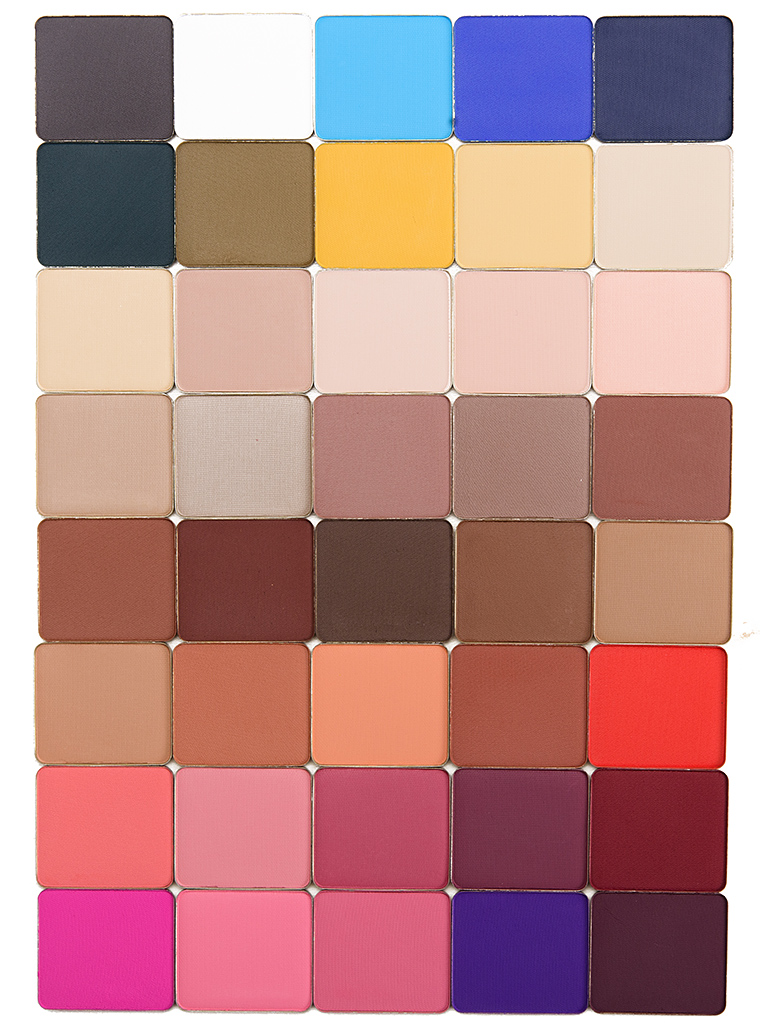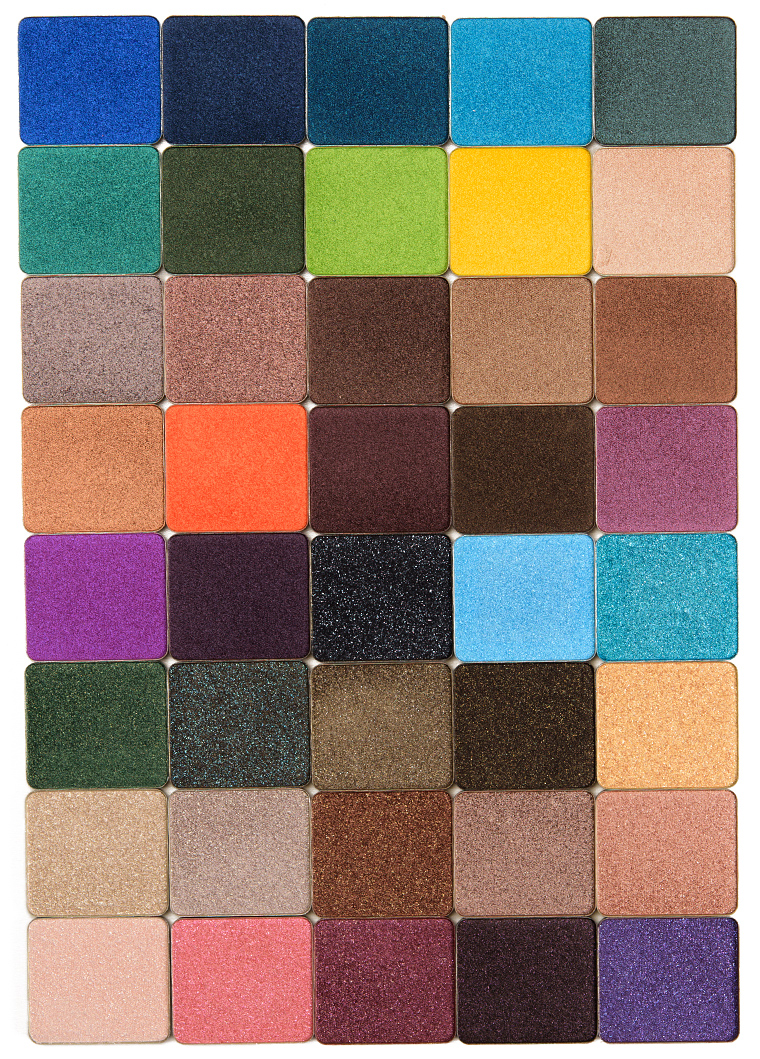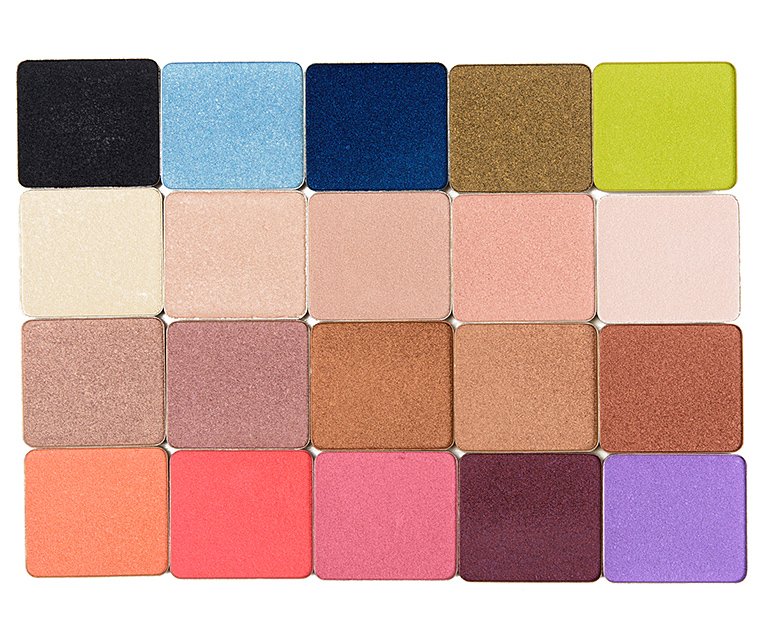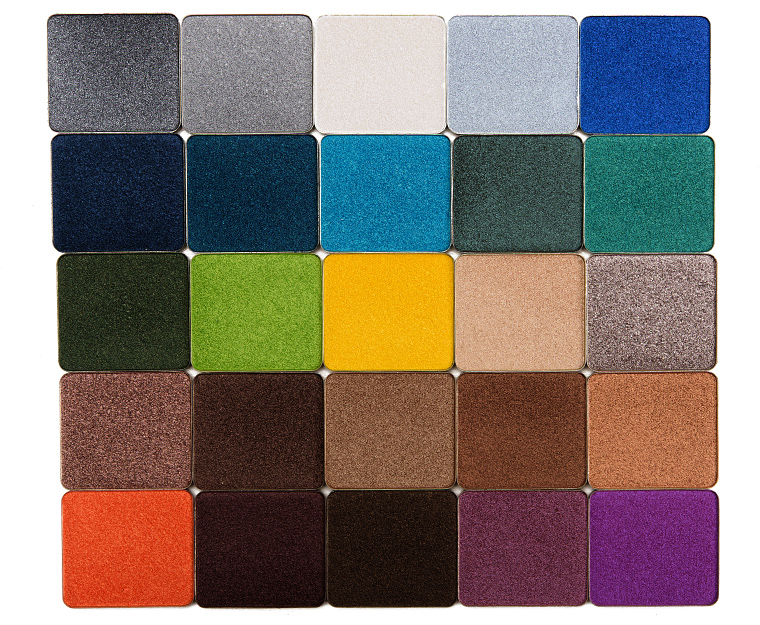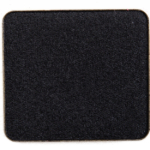Artist Color Shadow
Make Up For Ever
Make Up For Ever Artist Color Shadow is an eyeshadow that retails for $17.00 and contains 0.08 oz. ($212.50 per ounce). There are 125 shades in our database.
Jump to a particular section if you know what information you're looking for!
Browse shades we've swatched below, where you can refine results by color, undertone, finish, and availability! Use the drop down above if you're looking for a specific shade, including shades we haven't swatched or reviewed.
Filters
The original Artist Shadow formula had a creamier, slightly softer, and thicker feel for finishes like Metallic, Iridescent, and Satin, while I felt the original Diamond finish was denser/thicker (heavier almost) and the Matte finish was more powdery but similar in softness and pigmentation (I did not find the original Mattes to be ultra pigmented across the board--semi-opaque to opaque, buildable, which you can see in my original swatches here). By and large, I found the formula to be easy to work with and did not have to spend a lot of time blending or fussing with the shades on the lid.
The new Matte formula has a smoother consistency that has more slip to the touch with less powderiness in the pan, but the pigmentation did seem slightly weaker on average compared to the original... Read More.
The original Artist Shadow formula had a creamier, slightly softer, and thicker feel for finishes like Metallic, Iridescent, and Satin, while I felt the original Diamond finish was denser/thicker (heavier almost) and the Matte finish was more powdery but similar in softness and pigmentation (I did not find the original Mattes to be ultra pigmented across the board--semi-opaque to opaque, buildable, which you can see in my original swatches here). By and large, I found the formula to be easy to work with and did not have to spend a lot of time blending or fussing with the shades on the lid.
The new Matte formula has a smoother consistency that has more slip to the touch with less powderiness in the pan, but the pigmentation did seem slightly weaker on average compared to the original formula. The pigmentation of the new Matte formula was still semi-opaque to opaque and buildable but I felt like there were just more shades that were closer to semi-opaque than to opaque.
However, shades like M402 Mimosa showed improvement, as it used to be a Satin (see here) and not as easy to work with due to the denser texture. A lot of the shades were similar in color between the formulas, but there were a few that were not (M546 Dark Purple Taupe was a shade with more significant changes; the new version is warmer and lighter).
Overall, I did not have any issues applying most of the matte shades to the lid, blending them out, or building up coverage. They lasted between nine and ten hours on me, which was actually a bit longer (on average) compared to the original formula, where the mattes tended to wear between seven and eight hours on me (without primer).
The new Satin formula was the most different; it had weaker pigmentation, felt denser and drier with less give and creaminess. In practice, I did not feel like application was harder or noticeably different other than feeling like more of the shades required two layers for more opaque coverage, though some of the more neutral shades were fairly pigmented in a single layer. I also noticed that this particular finish seemed to be the most culled; there weren't that many shades in it, and I wonder if they did not sell well or something about the finish is harder to produce.
There were significant differences in color (and/or undertone) between shades in the new formula and old formula (with the same names) within this finish, too, where most were different rather than only a handful being different. The pigmentation of the new Satin formula was typically semi-opaque and buildable, while they applied evenly, blended out without much effort, and lasted between eight and ten hours (without primer).
The new Iridescent formula was the second most different and more comparable to the Satin finish in terms of overall feel and performance, just with larger shimmer/micro-sparkle. The new formula has a denser consistency (almost "drier" and with less slip) and didn't feel as cream-like, but the powder seemed to pickup better with most brushes and was more consistent in the actual finish--pearly with sparkle--whereas the original formula varied more heavily between pearly and metallic, sparkle and finer shimmer.
There were, however, more substantial color and undertone differences between old and new within this formula, like I saw with the Satin formula. Overall, I did not experience any significant issues applying most of the shades to the lid--they were semi-opaque to opaque, fairly buildable, blendable, and long-wearing (eight to ten hours).
The new Metallic formula was the most consistent between old and new for overall feel, performance, and color. There were, of course, a few shades that seemed lighter/darker, cooler/warmer compared to the previous versions, and all those notes will be made within the respective shade's review. I think the new Metallic finish has a more flattering look on the lid, as the consistency wasn't quite as thick, which should make it apply and appear smoother on the lid for more people.
There were several shades that seemed slightly deeper or less reflective, while others were as reflective as past versions. The majority of the shades of this finish were very pigmented with a moderately dense, lightly creamy texture that blended out well on the lid and wore between nine and ten hours on me.
The new Diamond finish was noticeably less dense/thick, particularly on the lid, which did make it easier to spread across a larger area and easier to pickup with more types of brushes. I was worried that there would be more fallout, but I haven't noticeable much fallout with the new Diamond shades over the eight to ten hours they last for.
Most of them had good pigmentation, though there were a few that were weaker (medium to semi-opaque coverage); a shade like D410 Gold Nugget was a weaker shade before and still is while D326 Lagoon Blue is significantly less pigmented in the new formula.
As I typically do with new eyeshadow formulas, I tested a few shades from each finish over various primers, as I like to see how new formulas interact with different types of primers and if there are any unexpected consequences of using primers (I felt that some of the more silicone-heavy Artist Shadows from before actually applied better without primer).
I didn't notice any ill effects of using primers like Smashbox 24-Hour, Marc Jacobs Coconut Eye Primer, Too Faced Shadow Insurance, or Urban Decay Primer Potion. They all seemed to just help with wear, and with some of the shades that felt drier or had weaker pigmentation, the use of primer seemed to improve initial coverage levels, too.
The average rating based on all reviewed shade(s) in this formula is shown below.
Artist Color Shadow
PPermanent. $17.00.
Looking for something similar or to see what you have in your stash? Here are some of the top dupes for this product!
Here are the highest rated Make Up For Ever Artist Color Shadow shades:
Reveal your inner artist and create your perfect color mix with Artist Color Eye Shadow. Choose your palette size, and then customize it to your needs by mixing and matching your favorite shades. MAKE UP FOR EVER’s artist-grade atomized formula is loaded with pigment for high-impact color in a single swipe. Its smooth, buttery texture allows for superior blendability, and silicon-coated pigments allow for it to stay put for up to 12 hours of wear*. With a range of 121 shades available in an array of finishes, these ultrafine powders can be layered and mixed to create an infinite number of looks.


